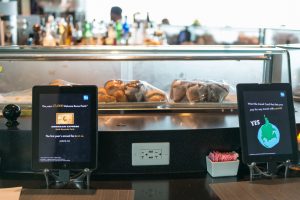Lessons Learned From Omnichannel Dynamo Chili’s
With different mediums of shopping, companies have to create a seamless shopping experience across the board. As a result, every aspect of the consumer journey, from browsing to purchasing, has to be a smooth transition, both online and offline. People demand an omnichannel experience that is social, quick, easy to use, and valuable to the consumer.
Technological creativity seems to have more of an impact than a brand name. Customers are no longer impressed by a shiny new app of their name being personalized in an email. The 21st-century customer expects brands to create an omnichannel shopping experience that encompasses all online and offline interactions.
Let’s take a look at how Chili’s is using omnichannel and a little technical creativity to create the ultimate dining experience
Wait in line….from home
Gone are the days of waiting in line at Chili’s to get a table. The casual dining restaurant has partnered with NoWait to power their new mobile waitlisting feature on the Chili’s app. Through the use of the app, Chili’s can provide an enhanced dining experience. For diners who wish to enjoy their favorite menu items during peak hours. With the waitlisting feature, diners can reserve a spot in line and check up on wait times from any location or mobile device.
The waitlisting capability has given Chili’s an advantage in restaurant-diner relations. By combining the mobile and in-restaurant experience, diners have convenience and speed at their fingertips. The wait listing feature allows Chili’s to have faster table turnover and accurate estimates for wait times. Guests can not only check up on wait times but can also go ahead and order what they would like while still “waiting in line” while in the app. With combo offers and other special menu offers, Chili’s now gives diners a way to get their food without waiting in line and with little preparation time. Chili’s use of the waitlisting feature creativity uses mobile to optimizing the in-store dining experience.
 Embrace Social Media
Embrace Social Media
Across social media platforms, food and beverage mentions are the most popular. The way customers review restaurants on social media fundamentally changes the way restaurants are approaching social media. According to a Netbase report , Chili’s is one of the most popular brands on social media.
So what did Chili’s do right to make them among the top 15 most popular social media brands?
Chili’s embraces the way food and beverages are consumed from a social media perspective. It is no longer enough for a restaurant to have great written reviews. Presentation and picture quality is the new buzz in food reviews. Because of this shift, Chili’s has made changes to the brick and mortar restaurant to garner positivity on the digital landscape. Even the way food is prepared is being changed to be more appealing in photos. For example, French fries are served in stainless steel bins, ribs are neatly placed on plates, and even the plates themselves have been revamped to be prettier in photos.
The goal is to make menu items look more tempting in pictures, increasing the number of mentions and shares online. This improves Chili’s online presence and visibility on high traffic platforms like Instagram.
Tabletop tablets
Smartphones and tablets have made access to information and services available at our fingertips. The demand for convenience and speed has started shaping the way restaurants are tackling food service. While online ordering and delivery have made the eating-out experience easier, customers lose the dining experience. As a result, sit down restaurants are now introducing the tabletop tablet. This system allows diners to place food and drink orders through a provided tablet. Diners now have control of their dining experience. These tablets streamline food service without replacing the personal interactions with servers. With the tap of the finger, dinner guests can now input orders and requests such as waiter service, beverage refills, and chats with the chef.
This year, Chili’s implemented over 70,000 tablets across its restaurants to provide a smooth, reliable dining experience. The smart table top option is tightly integrated with the Chili’s ordering system, ensuring that everything is up to date. The tablet displays the most relevant and updated menu items, prices, and descriptions and can even show customized consumer reviews of the items that you have ordered.
The ability to omnichannel approach to ordering and paying for food through a tablet has boosted the volume of orders. The speed with which customers can pay with the tablet has also increased table turnover. As a result, Chili’s can seat more customers than before.
Chili’s has done a fantastic job of leveraging technological creativity to create omnichannel success. Have you seen other restaurant brands using omnichannel to enhance their customer experience? Let me know in the comment section below.





